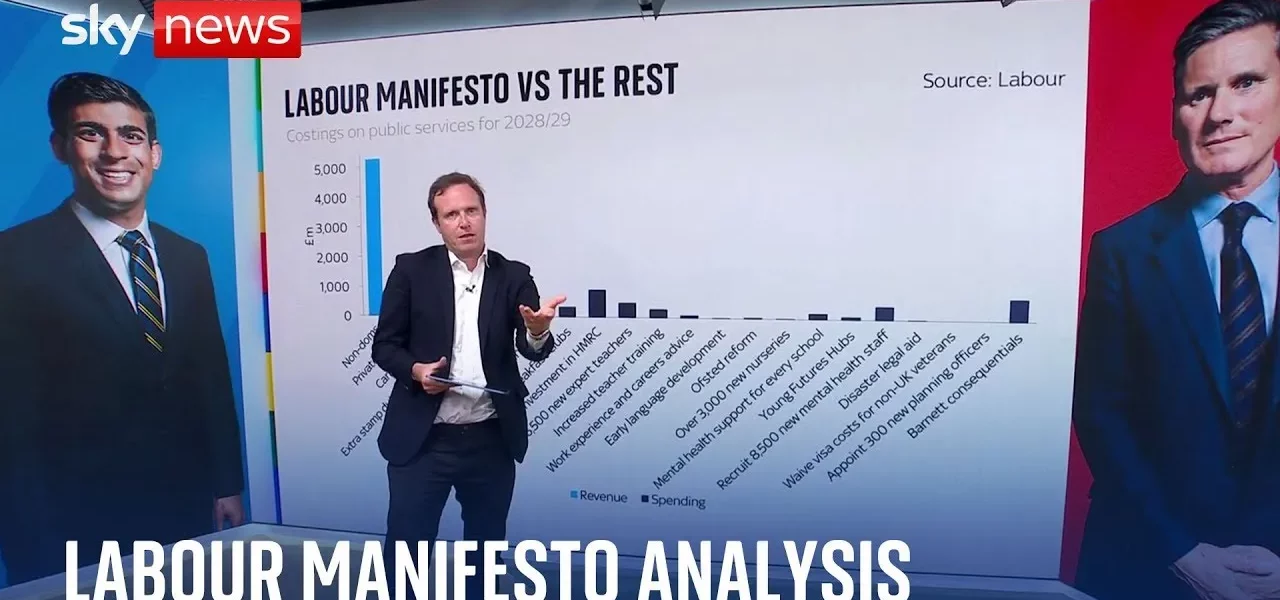The Labour Manifesto: A Detailed Analysis of Commitments and Tax Implications

This article offers an in-depth exploration of the Labour Manifesto, focusing on the key commitments made by K. Starmer and how they compare to previous Labour policies and those of other political parties. We will analyze the potential tax implications and spending commitments to understand their impact on the UK economy.
Introduction
The Labour Manifesto, presented by leader K. Starmer, has generated significant discussion, particularly in light of recent polling data reflecting public sentiment. Many anticipated more substantial changes or surprises within this manifesto, but the reality appears to be different. The manifesto largely reiterates previous proposals, with established spending commitments and tax policies that may not introduce the level of transformation once expected. This article will dissect the Labour Manifesto to uncover its implications for the UK, focusing on tax commitments, spending plans, and comparisons with other political parties.
Key Commitments in the Labour Manifesto
The Labour Manifesto presents a range of commitments, primarily aimed at addressing public concerns and economic challenges. However, it lacks significant new proposals. Here are the main areas of focus:
- Tax Increases: The manifesto outlines familiar tax increases, including measures targeting private schools and non-domiciled individuals.
- Spending Commitments: Public service spending remains a priority, with an emphasis on maintaining a cautious approach to financial management.
- Green Investments: There is a notable commitment to green investments, which aims to support sustainable development and environmental protection.
- Windfall Taxes: The Labour Party plans to implement windfall taxes, hoping to generate additional revenue.
Tax Revenue vs. Spending Commitments
One of the critical aspects of the Labour Manifesto is the relationship between anticipated tax revenues and planned spending. The following points highlight this dynamic:
Projected Tax Revenues
The Labour Party estimates that tax revenues will reach approximately £77.4 billion. This figure is central to understanding the financial framework of the manifesto.
Spending Commitments
When comparing the projected tax revenues to the proposed spending commitments, a significant disparity arises:
- The Labour Party projects spending commitments that exceed their anticipated tax revenues.
- This indicates a potential need for borrowing, estimated to be just over £1 billion.
Comparative Analysis with Previous Manifestos
When examining the data in a historical context, K. Starmer’s manifesto reveals a distinct contrast with previous Labour manifestos under leaders like Jeremy Corbyn:
- Corbyn’s manifestos featured significantly higher spending and investment promises.
- Starmer’s commitments are notably more conservative, raising questions about the party’s current direction.
Comparison with Other Political Parties
To better understand the implications of the Labour Manifesto, it is essential to compare it with the manifestos of other parties, particularly the Conservatives and the Liberal Democrats:
Conservative Party
The Conservative Party’s manifesto includes plans for increased taxation, despite some reductions in specific rates. However, the overall tax burden remains a contentious issue:
- The tax burden is projected to rise, reflecting ongoing economic pressures.
- Despite tax cuts in certain areas, the overall financial contribution from citizens is set to increase.
Liberal Democrats
The Liberal Democrats have proposed even higher tax commitments than the Labour Party, raising the stakes in the political landscape:
- Their proposals emphasize social investment and public services, leading to a higher projected tax burden.
- This places Labour’s commitments in a more conservative light compared to their rivals.
Conclusion
The Labour Manifesto presents a cautious approach to economic management, reflecting both the challenges of the current political climate and the party’s strategic positioning. While there are commitments to increase taxes and spending on public services, the overall financial commitments are relatively modest compared to previous Labour policies. As the political landscape evolves, voters will need to consider how these proposals compare to those of other parties and their potential impact on the UK economy. As we approach the election, it will be crucial to engage with these issues and assess the viability of the Labour Party’s promises. For more insights into UK politics, explore our related articles on party manifestos and economic policy.
“`




